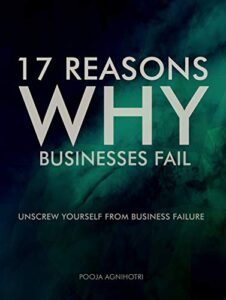A winning marketing strategy is a secret to creating a successful business.
A marketing strategy that is not influenced by short-term growth but is shaped by long-term growth.
Something that is not based on myopic views and shortcuts. But something which is built on strong research and planning as its foundation.
Let’s see if your marketing strategy is what it should be or not.
What is a Winning Marketing Strategy?
It is the long-term strategic plan of your business that outlines how you are planning to achieve your business goals.
These goals generally should be in tune with your business’s mission.
In simpler words, winning marketing strategy secrets will have answers to all these important business questions-
- Who is your customer? How are you going to define them? How are you planning to reach out to them?
- How do you think your business offering is going to create and add value to your customers’ lives?
- How are you going to communicate the value of your business offerings to those identified customers in point 1?
- How are you planning to distribute products to your customers in a way that adds value?
- How are you going to price your products that improve the value proposition?
- How and what kind of services are you going to provide to your customers so as to increase customer value, customer satisfaction, and customer retention.
Importance of a Winning Marketing Strategy
Your customer relationship becomes stronger when you add more customer value, improve customer satisfaction, and increase customer retention.
Customer Relationship = Customer Value + Customer Satisfaction + Customer Retention
When your customer relationships grow, your business grows with that. Amazon was able to grow its business into a billion-dollar worth company by following this approach.
Strong Customer Relationship = Business Growth
Three Stages of Creating a Winning Marketing Strategy
The effectiveness of your winning marketing strategy secrets is very much dependent on how you segment the market, who you want to target, and how, and what values you want to offer them.
This is also known as STP (Segmentation, Targeting & Positioning.)
Stage 1) Segmentation
Whether you are creating a general marketing strategy or you are creating a digital marketing strategy, segmentation forms a major part.
The digital world has given you various new channels and ways of segmenting your market that were not available earlier. Share on X
But utilizing those for targeting your customers can make a huge difference to your winning marketing strategy secrets.
You can’t serve all. In the first place, this is not a realistic thought.
Not to mention, it has led to the failure of many businesses. Just think for a moment is there anything in the world that everyone agrees is good.
I guess you can’t find anything like that.
Even books like 1984 have bad reviews on Goodreads.
If that’s not enough, go check any business, probably a business you admire, on Google, and see what kind of reviews it has got. You will definitely find a few negative ones.
The problem here is that the product is good. It’s just not good for everyone. Because no two people are the same.
They have different personalities, make different choices, and like different things. Keeping that in consideration, it can be said that 1984 is a great book.
It’s just not good enough for everyone.
The same goes for your product. Your product is good but it’s just not good enough for everyone.
All things considered, you should put all your focus on segmenting the marketing correctly so you can reach your ideal buyers.
Before you can start market segmentation, you need to understand what exactly is a market.
Finding the Right Market for Your Product
A market is made of actual and potential buyers of your product. It will include all those who will be interested in buying your product.
Once you know your market, you can start segmenting that market so you understand the needs of every segment better and can provide better customer value to them.
A market is not segmented solely based on physical boundaries. A city can have many types of markets within itself. Share on X
Your task as a business owner is to find the right market or the group of buyers for your product by segmenting it.
For example, if you are launching a ginger-flavored soft drink, you have to first find the market for your product.
You have to figure out all those sets of people who might be interested in your product.
All those sets of people will then constitute various segments of your market.
4 Market Segmentation Tips
Market segmentation means dividing the market into various subsets.
Even though it may appear that your market has the same kinds of needs, they actually don’t. Needs vary a lot as demographics change, psychographics change.
In addition to that, needs are also affected by a person’s culture and beliefs.
This makes it important to segment the market so you can group together the same kind of needs in one set.
This will help you in building better customer relationships.
Before you start the process of market segmentation, you should keep in mind that a good segment has four characteristics.
-
-
-
- Your Market Needs to Be Accessible
-
-
A market segment should be accessible.
By accessible, I mean within your budget and resources, you should be able to reach this segment. If it’s outside your reach, it’s not a market segment worth considering.
-
-
-
- It Should be Easily Definable
-
-
You should be able to easily define a market segment.
This is the segment that you can identify and measure based on some useful criteria like demographics, psychographics, cultural beliefs, or anything else.
If you find yourself at the loss of words for your segments, you haven’t done a good job.
-
-
-
- Choose a Market That is Actionable
-
-
A good market segment should be actionable.
Let’s say you have identified a great segment for your product but if you can’t do anything there, then it’s a useless segment for your business.
-
-
-
- Most Importantly, Select a Market That is Profitable
-
-
Above all, the segment should be profitable.
If you have segmented the market into accessible, definable, and even actionable segments, but they are not profitable, then you have to rethink your segmentation strategy.
Stage 2) Targeting
Once you have segmented your market, the next step is to figure out which segment is the most attractive one to your business right now.
Based on your available resources, you have to evaluate which segment aligns the most with your business mission at the moment.
This should become your target market.
The importance of market segmentation rises because you can’t target everyone based on the limited time, money, and efforts you can put in.
Understanding Market Targeting
Market targeting is identifying those segments of the market that you want to target right now.
You should target only those segments who you think you can serve best and who are also profitable to your business.
Many times business owners make the mistake of targeting many market segments because of the temptation of increasing the demand for their products and increasing sales.
But they forget the fact that all the market segments are very different from each other and will thus require specific marketing strategies for every segment which actually needs additional time, energy, and cost.
If you try to use the same strategy for all without much differentiation, you end up hurting your entire business growth by wasting the budget on the things that are not going to generate the expected results for you.
When you try to serve all the market segments, you serve none.
What is a Target Market?
A target market is that segment of the market which has your ideal set of customers and who you can serve best currently with your limited resources.
It contains all those people whose problems can go away by using your products and who can lead to your business growth at the same time.
Let’s imagine you are a New York City fashion company. Your ideal customers are not just in NYC, they are in LA and they are also in many cities in Europe.
But you don’t have a budget to build a store in Europe right now.
Then clearly Europe is not your target market currently and you should just serve your NYC customers in a better way.
The entire process of identifying your target market will be based on a lot of market and customer research.
The right target market, when served with the right product message, leads to desired actions and the success of your business growth plan. Share on X
Stage 3) Positioning
First, you do segmentation, then you do targeting and finally, you do positioning.
Positioning is in a way implementation of your targeting strategy.
It’s about how are you going to reach your target market and how are you going to communicate your message to them.
Your positioning is going to define all your marketing and advertising strategies. And your positioning is defined by your value proposition.
What Makes You Different From Others?
A value proposition is a set of all the benefits and values that you are promising your customer in the form of a product to satisfy their needs.
In addition, a value proposition is going to define what makes you different from others.
This is what will make you stand out in the market.
How Are You Going to Create the Customer Value?
To create customer value, you have to first understand customer needs.
If your product and your customer’s needs don’t match, you won’t be able to deliver any value to your customer.
Consequently, the process should always be started by figuring out the customer needs and then figuring out how you can serve those?
These are the questions you should answer to create customer value –
-
-
- Why should one buy from you?
- Why should one buy from you and not from your competitors?
-
Creating a value proposition is more than just a tagline. For example here are a few brands and their value propositions –
American Express – Don’t Leave Home Without It
BMW – The Ultimate Driving Machine
Walmart – Save Money. Live Better.
Adidas – Impossible Is Nothing
And their value propositions summarized in their taglines reflect the entire customer experience.
They are not just promising. They are also delivering.
The first part of positioning is creating a value proposition and the second integral part is delivering that value proposition.
You should figure out how you are going to communicate the value proposition to your customers?
And how are you going to deliver superior customer value?
Key Takeaway: Winning Marketing Strategy
With time, the way a business is run has changed.
Earlier when the interest of customers was aligned with the interest of a business, that was considered as great and something to strive for.
In current times, people want more than that. Business is now expected to match the interest of the company with the interest of the customer and also with the interest of society.
This is the secret of a successful business in modern times. In addition, it should reflect in your market segmentation, market targeting, and product positioning.
If you need help with your product positioning, get in touch with us.
The Stories of Deadly Business Mistakes That You Should Absolutely Avoid
The secret to success in business isn’t doing what other successful people have done; it’s by avoiding the mistakes made by businesses that have failed. Instead of repeating their mistakes, now we can learn from them and best ensure business growth and commercial success.
17 Reasons Why Businesses Fail brings the cautionary tales of mistakes made by many businesses that ultimately led to their failure and which other businesses should avoid at all costs if they plan to survive and grow. Get your copy.
Want us to work on your brand positioning?
Blogs you don’t want to miss:







